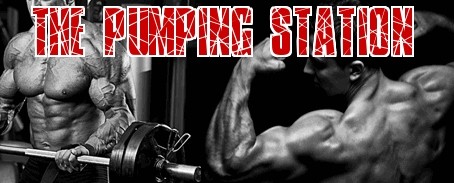Powerlifting Training Tips
A Mindset of Power
By Bob Shaefer
It never ceases to amaze me how so many weight trainers come up clueless if asked to describe the basic training differences between Bodybuilding and the pursuit of "one rep strength" as applied to the 3 lifts involved in Powerlifting.
Within the last year my latest projects have landed me in a situation where I am coming in contact with more an more frustrated individuals looking for, either the truth or some highly exotic training secret that has eluded them for all this time even though they have questioned everyone who even lived near a gym.
To train for strength without any compromise means never going near some of the shiny new isolation devices in the gym.
To train for strength means less overall time spent in the gym each week.
Just those two truisms will spark a compromising tone in the ones who were hoping I wouldn't mention subtractions in the process. This group is looking for additions to their current program.
I can't really blame them. For years they've only been exposed to the "other" muscle training formats, written and finely illustrated over and over in glossy magazines neatly stacked on almost every magazine stand.
For this group I am learning to cut my efforts to convert, leaving me with more time for those with the deep desire to give up or add whatever is needed to allow a climb in power.
Increases in strength must be nursed from the body, always allowing tendon / ligament strength to build in conjunction with muscular gains. The time factor requires patience. More from some than others depending on each individual's genetic predisposition. Powerlifting is a very selfish sport. Make the slightest mistakes in training and much could be lost, come the day of competition.
Power comes from activating a group of muscles in a given pathway. By refining that pathway you'll reach a point where form resembles that of a robot, putting rep after rep in the same narrow groove. To strive for perfection in the 3 pathways, leaves little to no importance for isolated pumping motions where one joint is the only one moving. I'll never understand why anyone would think the last few inches of a bench lockout will improve by doing set after set, rep after rep, with the limited poundage's used in most triceps isolation movements.
Those who keep their triceps in this state of fatigue might also think thigh extensions will somehow lead them to a progressive squat. Believe me, I've seen more than my share of those who feel a need to treat thigh extensions as if they might become the fourth discipline in their next meet. Let me dispel that myth right now. You might double your thigh extension reps at double the weight without ever adding 10 pounds to your squat.
Long term deadlift progress often comes from extending periods between sessions. Over and over, an occasional team member in my gym would come to a halt in progress only to find a new surge in strength by putting 10 days between sessions instead of 7.
The overall picture should be clear at this point. First, be honest with yourself. Accept the fact that little to nothing will be gained by hammering away on a cable apparatus that has only one half of a limb moving while the rest of your body stands motionless like a statue. Accept the fact that you needn't make it a point to circuit train every piece of equipment on the floor just because they are there. Progress in any of the three power disciplines will come to an abrupt halt if you can't restrict training enough to allow precious healing to take it's course.
Try adding a day of rest each week. Stop triceps extensions and avoid the pec dec for two weeks.
Double your rest periods between bench sets. Refrain from doing more than 3 heavy sets in each of the power lifts at any given session.
I'm betting most of you will see an overall increase in power. Power that was always there but, sleeping.
Click Here to Sign Up for Your Free Bodybuilding Magazine Subscription
